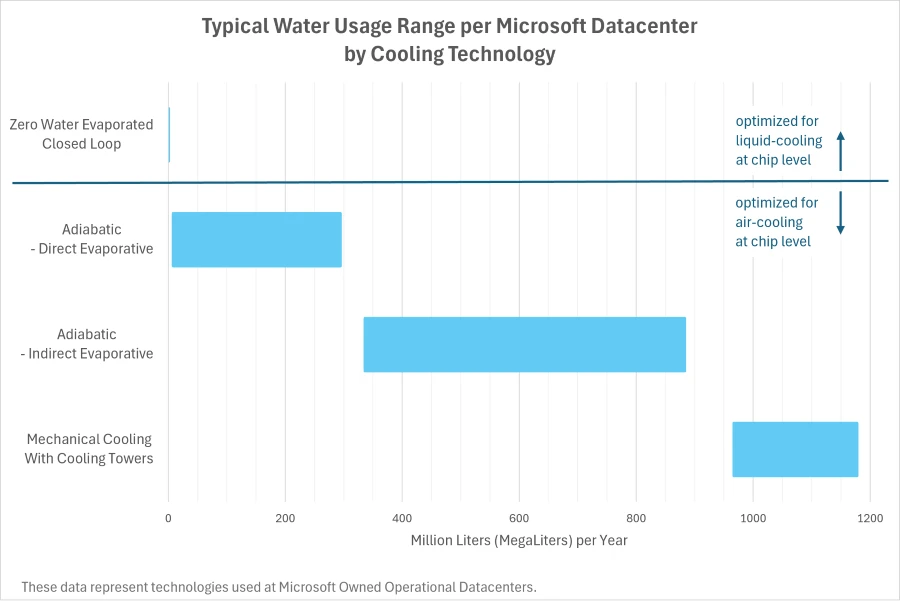Data centers produce substantial heat because of the continuous operation of numerous servers.
To avoid overheating and ensure peak performance, these centers rely on highly efficient cooling systems. One of the most effective ways to manage the heat is through the use of water, thanks to its natural abundance.
Microsoft, a leading tech company, has long used water-cooled traditional data centers and has also explored innovative approaches like underwater data centers using immersion cooling.
Now, the company is testing a groundbreaking project: developing a cooling system that wastes not a single drop of water.

Effective cooling not only ensures the safety and longevity of the equipment but also helps to maintain energy efficiency, which is increasingly important given the environmental concerns surrounding energy consumption in data centers.
But water has long been essential for cooling.
And Microsoft managed to experiment one without wasting any water.
The company does this by innovating a closed loop cooling system that recycles water.
Water is used, by only during construction.
Once the system is filled with water, it will continually circulate water between the servers and chillers to dissipate heat without requiring a fresh water supply.
"While water is still used for administrative purposes like restrooms and kitchens, this design will avoid the need for more than 125 million liters of water per year per datacenter," Microsoft said in a blog post.
"We have been working since the early 2000s to reduce water use and improved our WUE by 80% since our first generation of datacenters. As water challenges grow more extreme, we know we have more work to do. The shift to the next generation datacenters is expected to help reduce our WUE to near zero for each datacenter employing zero-water evaporation. As our fleet expands over time, this shift will help reduce Microsoft’s fleetwide WUE even further," the company added.
WUE, or Water Usage Effectiveness, divides total annual water consumption for humidification and cooling by the total energy consumption for IT equipment.
According to Microsoft, it's operating with an average WUE of 0.30 L/kWh, which is a massive 39% improvement compared to 2021, when it reported a global average of 0.49 L/kWh.
In traditional cooling systems, water inevitably evaporates as part of the process, carrying heat away in the form of vapor.
By minimizing Water Usage Effectiveness (WUE), Microsoft also improves its Power Usage Effectiveness (PUE).
This is possible because chip-level cooling solutions allow the company to operate at higher cooling temperatures than earlier IT hardware generations.
As a result, Microsoft can optimize power consumption using high-efficiency economizing chillers, even with elevated water temperatures. This approach leads to only a minimal increase in annual energy consumption compared to its evaporative cooling data center designs worldwide.

With its zero-water evaporation cooling system, Microsoft is on a quest for an ultra-low WUE.
But before the company can deploy the cooling technology to all its data centers, its "current fleet" will still use a mix of air-cooled and water-cooled systems.
The first data centers to use the zero-water evaporation cooling system would be in Phoenix, Arizona, and Mt. Pleasant, Wisconsin.
These data centers will pilot zero-water evaporated designs in 2026.
